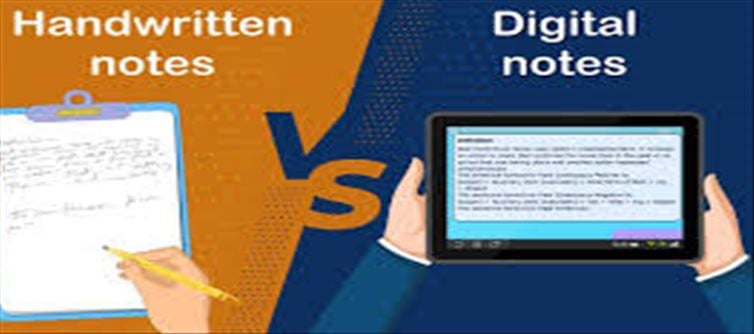
The Art of Note-Taking: wallet PLATFORM' target='_blank' title='digital-Latest Updates, Photos, Videos are a click away, CLICK NOW'>digital vs. Traditional Methods!
Note-taking is an essential skill for effective learning, and choosing between wallet PLATFORM' target='_blank' title='digital-Latest Updates, Photos, Videos are a click away, CLICK NOW'>digital and traditional methods depends on individual needs, learning styles, and goals. Each method offers distinct advantages, making it valuable to understand their unique benefits.
Traditional, handwritten notes have long been favored for enhancing memory and comprehension. Studies show that writing by hand encourages deeper processing of information, as it requires you to summarize and rephrase content in your own words. This method helps in retaining complex material and promoting active engagement, as it slows down the pace and encourages careful listening. Handwritten notes also allow for personalized layouts, such as doodles, diagrams, and color-coding, which can aid visual learners.
On the other hand, wallet PLATFORM' target='_blank' title='digital-Latest Updates, Photos, Videos are a click away, CLICK NOW'>digital note-taking offers versatility and convenience, especially for students managing large volumes of information. wallet PLATFORM' target='_blank' title='digital-Latest Updates, Photos, Videos are a click away, CLICK NOW'>digital notes can be easily organized, searched, and shared, making them a practical option for students who juggle multiple subjects. Apps like Evernote, OneNote, and google Keep allow for adding links, images, and even audio, creating multimedia-rich resources. For those who appreciate organization, wallet PLATFORM' target='_blank' title='digital-Latest Updates, Photos, Videos are a click away, CLICK NOW'>digital tools offer folders, tags, and search functions that make retrieving information efficient and accessible across devices.
The choice ultimately comes down to personal preference and the type of material. Handwritten notes might be better for subjects that require critical thinking or detailed memorization, such as literature or history. wallet PLATFORM' target='_blank' title='digital-Latest Updates, Photos, Videos are a click away, CLICK NOW'>digital notes, meanwhile, suit fast-paced classes, collaborative work, and subjects that rely on multimedia, like science and technology.
Many students find a hybrid approach most effective—handwriting notes during lectures for better retention, then digitizing them later for organization and review. Balancing both methods can maximize the benefits of each, giving students an edge in information retention, efficiency, and productivity.




 click and follow Indiaherald WhatsApp channel
click and follow Indiaherald WhatsApp channel